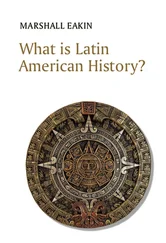Sadly for the Native people of the pueblos, Pope capped his triumph by installing himself as absolute dictator and one who was as oppressive as any Spanish overlord had been. For the next eight years, he extorted a ruinous tax from his people, executing anyone who resisted. By the time of Pope’s death (from natural causes) in 1688, the pueblo region was in a state of chronic civil war. The Indians were vulnerable, and, a year after Pope’s death, the Zia Pueblo was retaken by the Spanish. In 1692, Governor Don Diego de Vargas laid siege to Santa Fe, entirely cutting off its water and food until it collapsed in surrender. During the course of the next four years, all of the pueblos submitted once again to Spanish rule, except for the Hopis, who were somehow simply overlooked by colonial authorities.
All was not entirely quiet. In 1695, the Pima Indians of lower Pimeria Alta-the region of present-day Sonora, Mexico, and southern Arizona-looted and burned Spanish settlements. The uprising was quickly suppressed, and more than 50 years would pass before the Pimas—these of upper Pimeria Alta, many descended from earlier rebels who had fled north—staged another uprising, which degenerated into a century and a half of smoldering guerrilla wars—first against the Spanish, then the Mexicans, and finally the Americans.
From Black Legend to Black Robes
Enslavement and warfare were not the sole legacies of the Spanish in the American Southwest. The priests—the Indians called them “black robes”—who accompanied the conquistadors not only brought their religion to the Americas, but also created a Euro-Indian culture centered around the many missions they established. The first of these, in New Mexico, were founded during the administration of Onate in 1598. In the course of the next century, Franciscan friars founded more than 40 more, mainly along the Rio Grande. By 1680, missions had been built among most of the Indians in New Mexico as well. As the presence in California of the Englishman Sir Francis Drake had stirred Spanish concerns in 1579, a French landing led by Robert Cavelier, sieur de La Salle, on the Texas coast in 1684 prompted the Spanish to build missions in that area.
Between 1687 and 1711, Father Eusebio Kino established many missions in northern Mexico and Baia California as well as some in southern Arizona, the most famous of which was Mission San Xavier del Bac. But it is for the chain of 21 Franciscan missions, linked together by El Camino Real (“The Royal Road”), extending along the California coast from San Diego in the south to Sonoma in the north, that the Spanish missionaries are best known. The first, Mission San Diego de Alcala (at San Diego) was founded by Father Junipero Serra in 1769. Serra would go on personally to found nine more.
The missions were communities, and, like any other communities, they varied widely in their success. Some faltered and collapsed, while others spawned fertile fields, vineyards, and vast herds of cattle. By bringing large numbers of Indians into a small space, the missions also tended to spread epidemic disease, and they disrupted native culture and traditions.
The way of the conquistador and the way of the Black Robe represent two distinctive aspects of the Hispanic Southwest. But whereas the conquistadors treated the Indians as bestial enemies, to be subdued and enslaved, the Catholic padres regarded them as miscreant children to be supervised and regulated. Neither extreme admitted a full appreciation of their humanity, but both traditions shaped the character of the Southwest in an enduring fashion. Both, too, created enmities between white and red, leaving scars on the history of the region so deep that they would not begin to fade until the end of the 19th century. As to the missions themselves, the last one, San Francisco Solano, in the Sonoma Valley of Northern California, was built in 1823, and the mission system endured until 1833-34, when the revolutionary Mexican Republic-which then encompassed the American Southwest-secularized Church properties.
The Least You Need to Know
The sensational exploits of Cortes in Mexico and Pizarro in Peru inspired exploration of the “borderlands” (the area of the present American Southwest).
Don Juan de Onate was typical of the oppressive colonial authorities who ruled the borderlands.
In addition to a hunger for wealth and power, the Spanish colonizers were also driven by a desire to convert the Indians of the New World to Christianity.
The word primogeniture is Latin, meaning first ( primo ) birth ( geniture ). It signifies the right of the firstborn child—almost exclusively the male child—to inherit the whole of his family’s wealth, titles, and privileges.
Whereas Spanish seafarers favored such grandiose titles as “Admiral of the Ocean Sea” and marquis of this or that, the great British navigators who sailed for Queen Elizabeth I gloried in the title of sea dog , coined during the 16th century and used to describe only the most daring and seasoned salts.
England’s Errands
(1497-1608)
In This Chapter
Search for a Northwest Passage
The “Lost Colony” of Roanoke
Jamestown: first permanent English settlement in America
Captain John Smith and Pocahontas
Some time in the 21st century, people of Hispanic heritage will become the single largest ethnic group in the United States. History is always getting rewritten, and, doubtless, it will get rewritten then as well. However, up to the present, most American history has been told from a distinctly Anglo point of view. There is no doubt that Spain often acted cruelly in the New World, but it is also true that the history of Spain in the New World has been written, mostly, by Anglo historians who, over the years, have narrated that record of cruelty with great relish and even an attitude of superiority. In particular, they have tended to contrast the Spanish colonial experience—driven by greed for gold and absolute power—with the English experience, motivated by a quest for religious freedom.
Well, things weren’t quite so simple.
Henry VII (1457-1509) ascended the throne of England after he killed Richard III in the Battle of Bosworth Field on August 22, 1485, thereby ending the Wars of the Roses, a series of clashes between the houses of Lancaster and York, rivals for the English throne. Not that it was much of a throne. The costly, bloody wars had drained off resources and manpower at a time when the rest of Europe was building great empires. Separated from the Continent by the English Channel, England had always been European, yet also apart from Europe—a comparatively tiny backwater, in fact, habitually torn by internal conflict among tribes, clans, and families.
King Henry decided to put his hard-won reign on the path to greatness. Having defeated Richard, the Lancastrian monarch sought to end the conflict between the branches of the royal family once and for all by marrying Elizabeth of York, daughter of King Edward VI. (The union produced one of England’s greatest—and most terrifying—kings, Henry VIII.) Henry VII built a strong central government, replenished the treasury, and, in 1497, sponsored the first English voyage of exploration in the New World.
For the sleepy island nation, this was a momentous step. Years later, about 1610 or 1611, during the reign of the first Stuart king, James I, William Shakespeare wrote what was probably his last play. Called The Tempest, it is about the beautiful young Miranda and her father-magician, who are exiled to an enchanted island across the ocean. Shakespeare drew much of his inspiration for this magical realm from reading contemporary accounts of the English voyages. There is one particular line in the play that seems to summarize the excitement of the “Age of Discovery” Henry VII had launched a little more than a century earlier. “0, brave new world…” it begins.
Читать дальше












